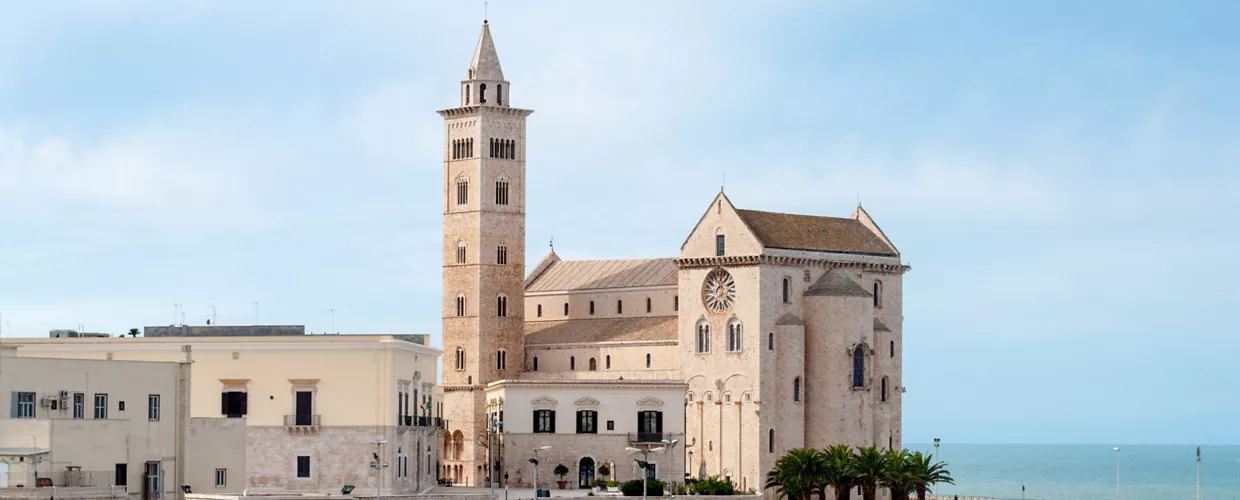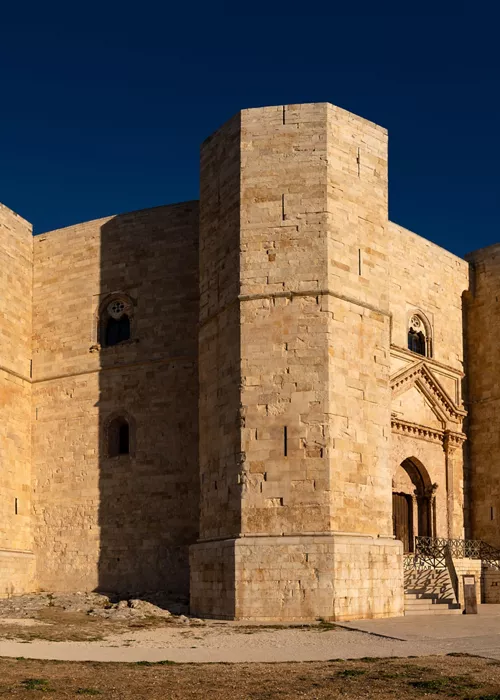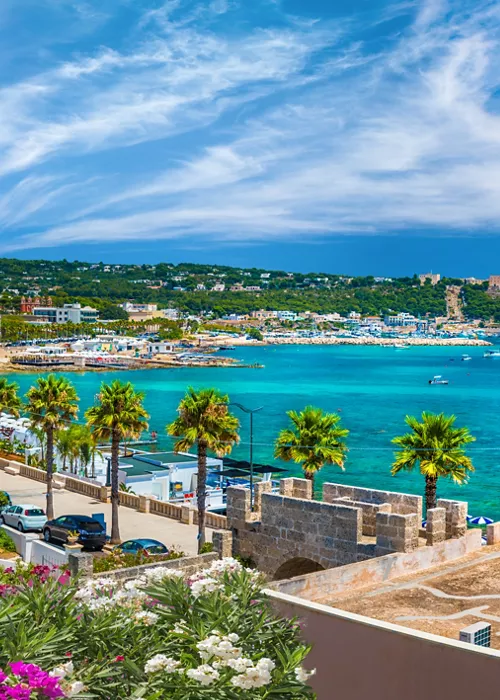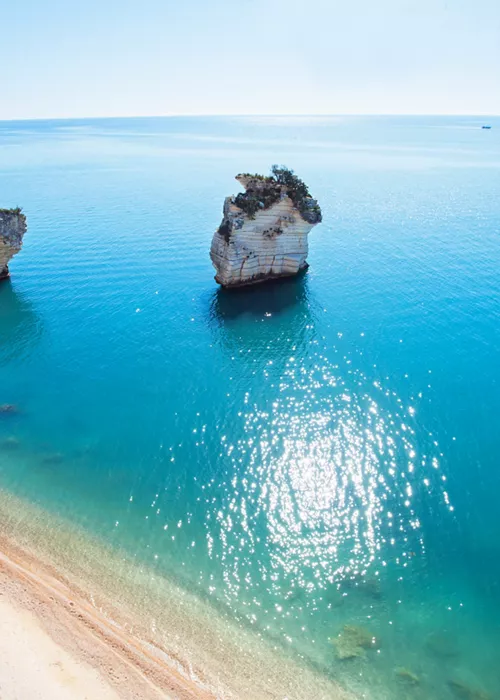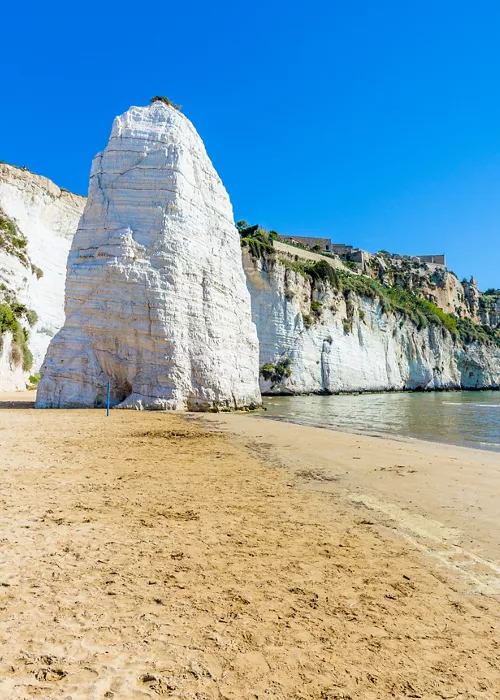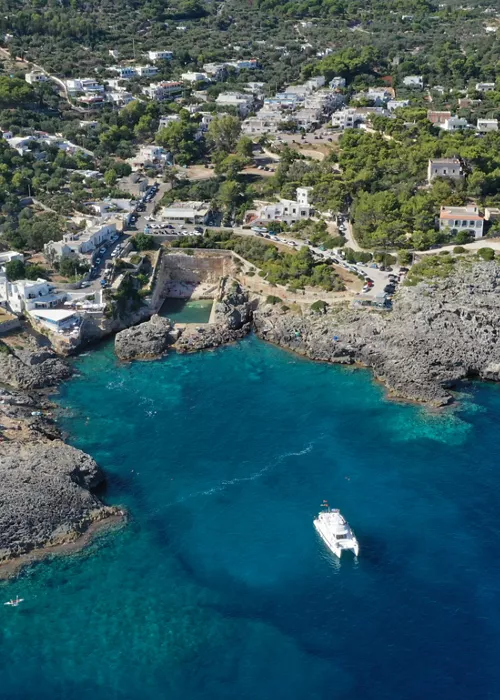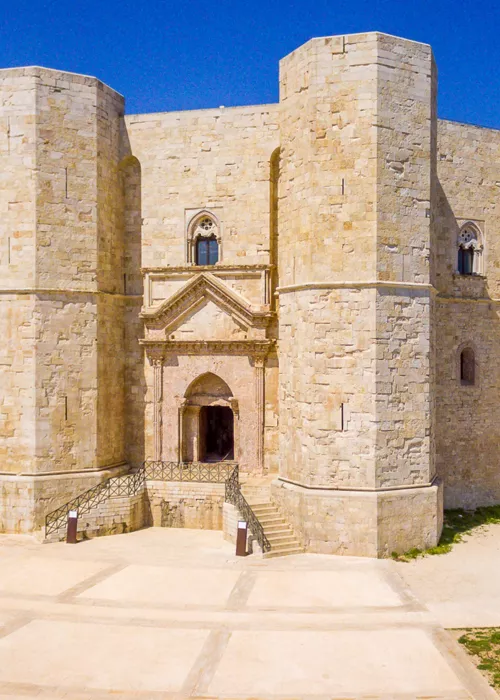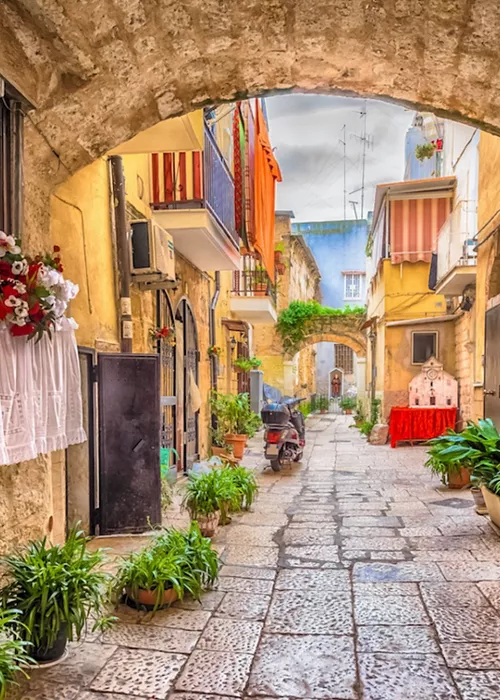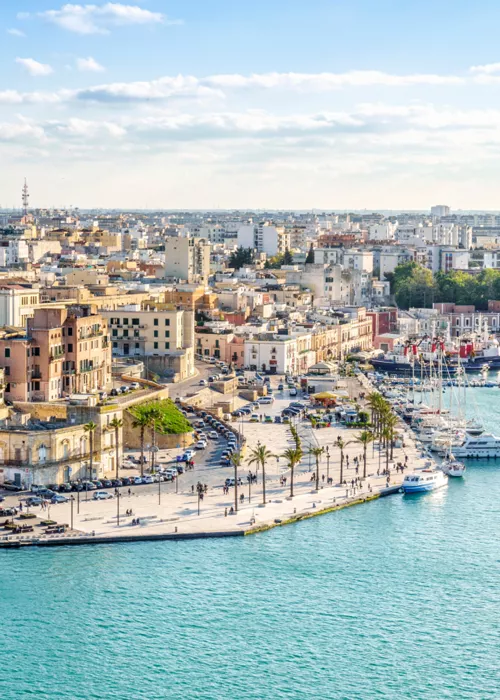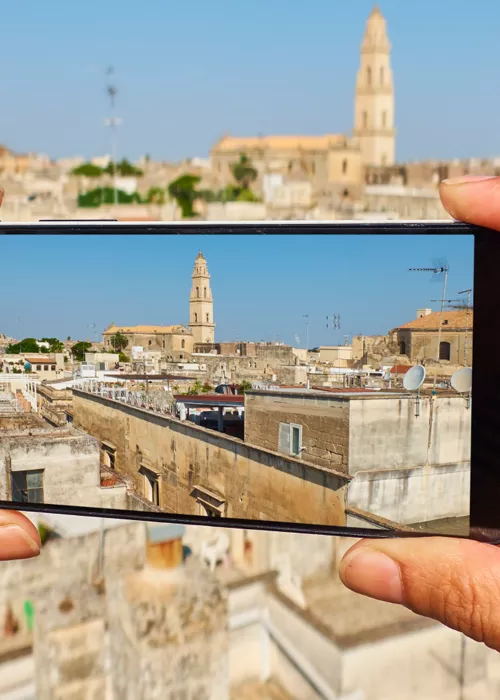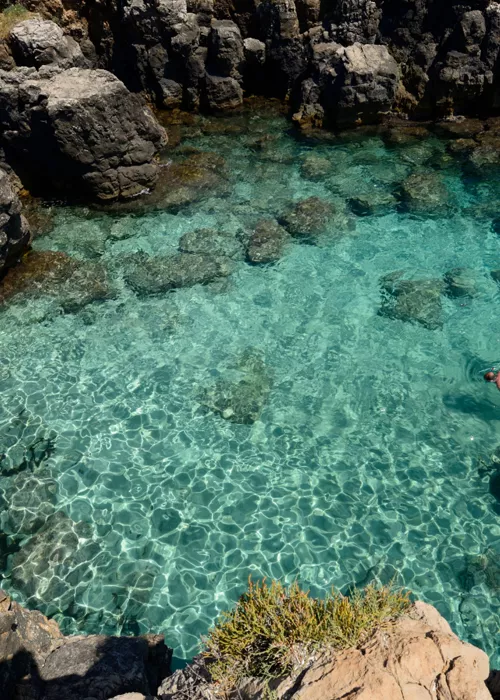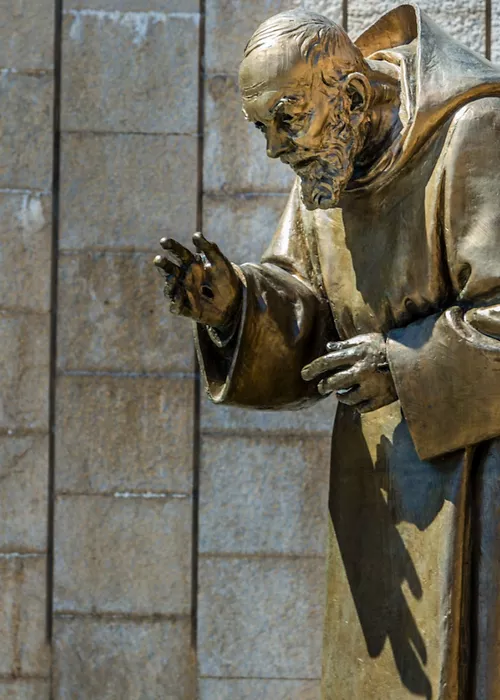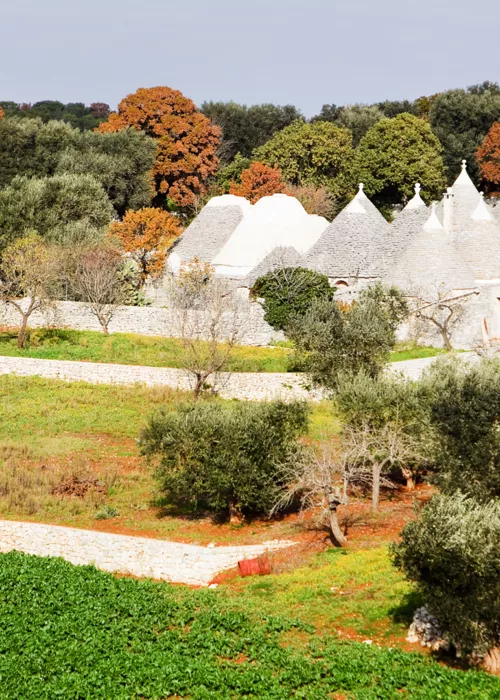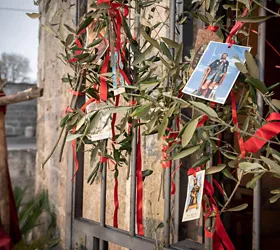Trani Cathedral, a Romanesque jewel by the sea
If you ever arrive in Trani by sea at dawn, it will unfold before you like a dreamlike vision.
Trani's cathedral of San Nicola Pellegrino in fact occupies a splendid and isolated position on a vast esplanade, making it appear to hang between sea and sky, bathed in light. A masterpiece of Apulian Romanesque style, a perfect synthesis of three elements – church, crypt and hypogeum – flanked by an elegant bell tower, it is the first thing to see if you are visiting the city.
Three churches for one sacred place
When you leave the old town and the bustling port behind, you see it rising from the sea, in a position that enhances its sacredness. Built on an earlier early Christian cathedral from the 5th century AD, demolished to house the remains of St Nicholas Pellegrino who died in the city in 1094, the cathedral, begun in the late 11th century, was clad with Trani stone, a slightly pinkish local marble that lends brightness to the building.
The venture, for the time, was quite daring, if only for the challenge of building on the seashore and isolating the foundations from the water, and saw the whole community engaged for long decades.
A work such as the cathedral of Trani, furthermore, is there to prove that in the city there were artists and workers of great ability, cultural depth and refined artistic taste.
Descend into the crypt-non-crypt: light reaches here
A double staircase on the facade leads to the rich doorway, flanked by blind archways: higher up, the facade has only three round-headed windows, a rose window and a bee.
In the interior, the upper church is divided into three naves surmounted by women's galleries that receive light from the apse window. From the back of the church, one can descend into the crypt of Santa Maria della Scala, a room that is actually very bright and high, and therefore hardly comparable to the concept of a crypt, with 28 marble columns supporting elegant cross vaults.
From here, we descend again – and we are a metre and a half below sea level – to the underground cave of San Leucio, which served as the sacellum of the early Christian church: it is a small room with barrel vaults, dating back to the Longobard period, which was built to house the saint's relics.
The bronze portal signed by the artist
The large bronze portal with 32 panels modelled in low relief with sacred and secular subjects is the work of Barisano da Trani, an important 12th-century sculptor. The recently restored original is kept inside the cathedral, while outside there is a 2012 copy.
The bell tower dismantled and reassembled
The elegant 59-metre high bell tower, the work of Nicolaus sacerdos prothomagister, and completed shortly after the middle of the 14th century, has the unusual feature of having a pointed arch at its base, an element that, while lightening and slimming its shape, makes it not very stable. The arch probably served to allow a passage to other buildings that no longer exist. Static problems became apparent as early as the 18th century, but it was only at the end of the 19th century that the plinth was strengthened, an intervention that did not, however, prove to be decisive.
In 1957, the Superintendency decided to radically intervene to save the work – and public safety – by dismantling the stone segments of the bell tower one by one in order to rebuild the foundations and incorporate a reinforced concrete structure in the base. Strengthened and stabilised in this way, the bell tower of Trani Cathedral no longer fears the pitfalls of time.



